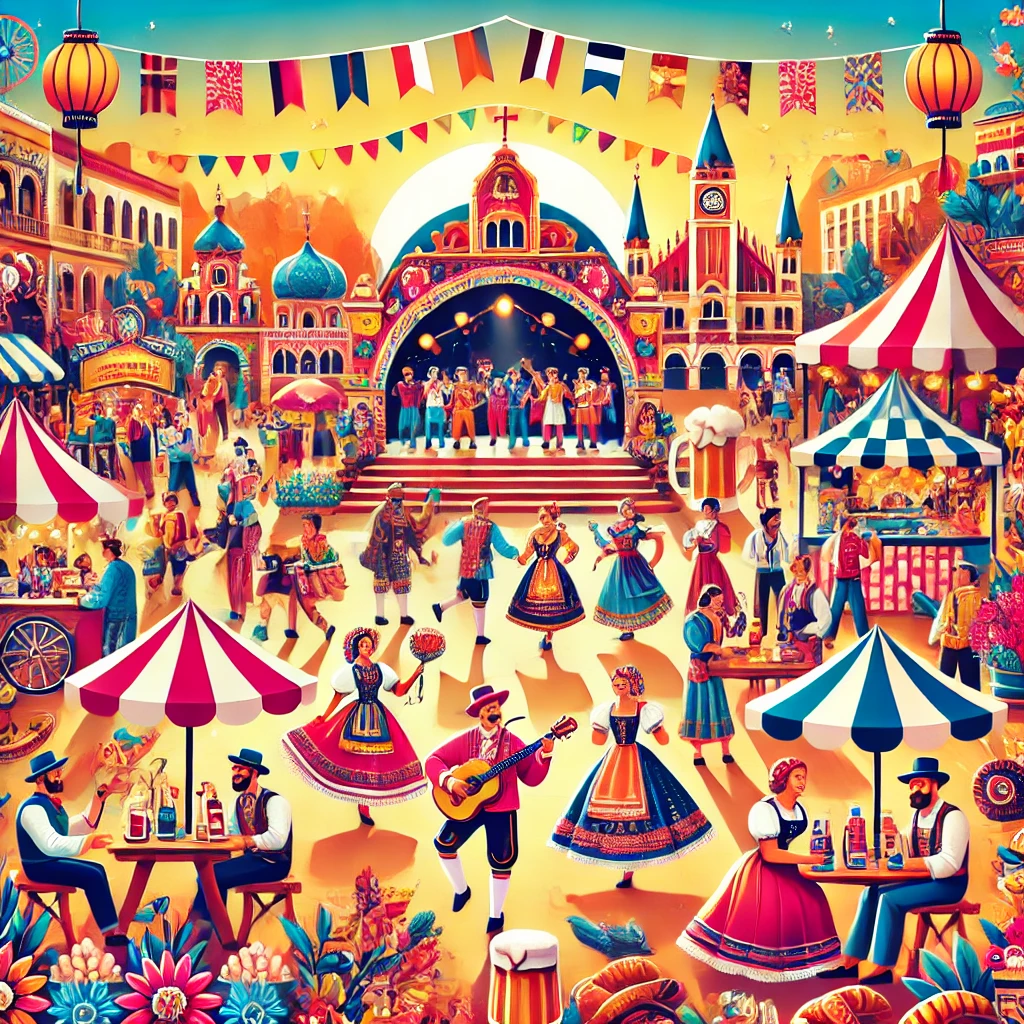Exploring a new culture is one of the most enriching experiences life has to offer. One of the best ways to dive into the heart of a community and truly understand its traditions is by participating in local festivals. These celebrations, often rooted in history and cherished by locals, offer a window into a region’s unique identity. In this article, we’ll guide you through the magic of cultural immersion via festivals, explaining how to fully engage, what to expect, and why these experiences leave a lasting impression.
Why Festivals Are the Heart of Culture
Festivals are much more than colorful parades and joyful gatherings—they’re an expression of a community’s values, beliefs, and history. Each dance, dish, and ritual tells a story of the people who preserve their heritage through generations.
For example, attending the vibrant Carnival in Rio de Janeiro reveals Brazil’s love for music, dance, and self-expression. Meanwhile, Japan’s serene Hanami (cherry blossom viewing) embodies the beauty of mindfulness and the fleeting nature of life. Festivals are living, breathing museums where you’re not just a spectator but an active participant in history.
How Local Festivals Foster Cultural Connection
Unlike guided tours or museums, festivals immerse you directly in a community’s everyday life. You’ll meet locals, taste traditional food, and perhaps even join a dance or ceremony. These experiences deepen your understanding and appreciation of the culture in ways passive observation never could.
For example, visiting India during Holi, the Festival of Colors, means getting splashed with vibrant powders while celebrating the triumph of good over evil. Similarly, Germany’s Oktoberfest invites you to share a beer and laughter with strangers, forging a universal bond of camaraderie.
How to Prepare for Festival Experiences
Before attending any local festival, it’s essential to do some research. Here are some tips to help you prepare:
- Understand the Festival’s Significance: Learn the history and meaning behind the event to appreciate its deeper context. For instance, Thailand’s Loi Krathong involves floating candles on water to honor the goddess of rivers—an act rooted in gratitude and renewal.
- Dress Appropriately: Many festivals require specific attire as a sign of respect. When visiting Bali for Nyepi (Day of Silence), modest and traditional clothing is appreciated.
- Learn Local Customs: Familiarize yourself with key phrases or gestures that show politeness. For example, bowing slightly when receiving food during Japan’s Gion Matsuri is considered respectful.
- Be Open-Minded: Some traditions might feel unfamiliar, but embracing these differences is part of the joy of cultural immersion.
Top Festivals for Cultural Immersion
- Día de los Muertos (Day of the Dead) – Mexico This vibrant festival honors deceased loved ones with altars, marigold flowers, and offerings of food. Visiting during this time offers an opportunity to see how Mexicans celebrate life and death as intertwined.
- Songkran – Thailand Known as the Thai New Year, this water festival involves splashing water to symbolize cleansing and renewal. Tourists and locals alike join in this joyous celebration.
- Venice Carnival – Italy Steeped in history, the Venice Carnival is famous for its intricate masks and grand costumes. You’ll feel as though you’ve stepped into a Renaissance painting.
- Pushkar Camel Fair – India This annual gathering in Rajasthan combines camel trading with cultural showcases like music, dance, and competitions. It’s a visual feast and a true taste of rural Indian culture.
- Midsummer Festival – Sweden Celebrated with maypole dancing, flower crowns, and feasts, Sweden’s Midsummer Festival honors the summer solstice and the beauty of nature.
Tips for Fully Experiencing Local Festivals
- Engage with Locals: Strike up conversations to understand their perspective on the event. They may share lesser-known stories or invite you to participate in traditions.
- Try Traditional Foods: From Japanese mochi during New Year’s to Spanish paella at Valencia’s La Tomatina, local cuisine is an integral part of the celebration.
- Participate Respectfully: While it’s exciting to join in, remember to respect cultural boundaries. If unsure, observe and follow the lead of locals.
- Capture the Moments: Photography is a great way to remember your experience, but always ask permission before taking photos, especially of religious or personal moments.
Why Cultural Immersion Matters
Traveling isn’t just about ticking landmarks off a list; it’s about building connections. When you immerse yourself in a culture, you not only learn about others but also gain new perspectives on your own life. Festivals offer a unique gateway to this understanding by blending joy, tradition, and human connection.
By actively participating in these vibrant celebrations, you become part of a story much larger than yourself. Whether it’s the quiet contemplation of a Buddhist lantern festival or the rowdy energy of a Mardi Gras parade, these moments will stay with you, enriching your worldview and fostering lasting memories.
Conclusion
Experiencing local festivals isn’t just a way to travel—it’s a way to transform. These celebrations remind us of the beauty in diversity and the universal threads that connect us all. So the next time you plan a trip, consider aligning your itinerary with a local festival. Step into the heart of a culture, and you’ll walk away with more than just souvenirs—you’ll carry the spirit of a tradition that has touched your soul.
